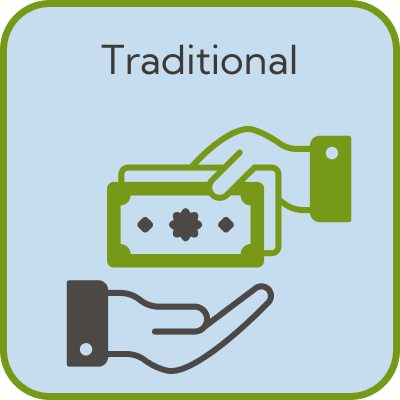Fundraise by participating in Self-organised stair climb challenge!
Self-organised stair climb challenge
If you are looking for a unique and physically demanding way to engage donors for your next charity cause, consider organizing a self-organised stair climb challenge. In this activity, you choose a high-rise building or public staircase in your community and set a goal to climb it a certain number of times or as quickly as possible. This can either be done individually or you could invite friends to join, turning it into a group challenge.
Stair climbing as a charity event is a great idea because it's not only a test of endurance and strength but also highly visible and engaging for spectators and supporters. It provides clear, measurable goals which can be a big draw for sponsors. As you push your limits, supporters get more invested in your progress and are often willing to donate more to see you achieve your ambitious goals.
To organize a successful stair climb challenge, first ensure you have permission to use the stairs at your chosen location. Safety is paramount, so inspect the stairs for any potential hazards and plan for first aid and hydration stations. Next, decide if this will be a timed challenge or based on the number of ascents and determine how participants can track their climbs effectively. Promoting your event is crucial; use social media, local community boards, and word-of-mouth to raise awareness and encourage more donations.
For the Sponsivity platform, the "Time Challenge" model and the "Distance Challenge" model are most suitable for a stair climb. In the Time Challenge, participants can aim to finish a set number of climbs in the fastest time, appealing to competitive donors who may pledge more as the challenge intensifies. Alternatively, using the Distance Challenge model, pledges can be made per number of stairs climbed or repeats completed, providing a clear and straightforward method for donors to contribute based on your physical achievements. Incorporating either of these models will help maximize engagement and donations, driving higher success for your fundraising efforts.
Remember, the key is to keep your donors updated with regular progress reports and maybe even live-stream your event for real-time engagement. This way, donors feel more connected to your cause, fostering a stronger community spirit and encouraging more substantial contributions to your charitable goal.

Sponsivity offers you several ways to raise for Self-organised stair climb challenge


💪 Physical Endurance – A Test of Strength & Stamina for Charity
Physical endurance challenges are some of the most demanding and rewarding ways to raise money for charity. These events push fundraisers to their limits, whether through long-distance running, cycling, swimming, or multi-hour challenges, making them highly compelling for donors. The harder the challenge, the more supporters are inspired to give.
Why Physical Endurance Works for Fundraising:
- High Engagement: Donors love to support fundraisers who commit to extreme endurance challenges, seeing their dedication as a strong reason to give.
- Scalable & Inclusive: Endurance events can range from personal step challenges to Ironman triathlons, making them accessible for all fitness levels.
- Long-Term Fundraising Potential: The extended training and preparation period allow fundraisers to build momentum and keep donors engaged.
- Great for Time & Distance Challenges: Fundraisers can challenge themselves to beat a time, achieve a distance, or push beyond their limits for charity.
Examples of Physical Endurance-Based Fundraisers:
- Marathon or Ultra Run: “Help me raise £2,000 as I take on my first 100K ultra-marathon!”
- Long-Distance Cycle Challenge: “I’m cycling 1,000 miles across the UK for charity—sponsor me per mile!”
- Extreme Fitness Challenge: “I’m doing 24 hours of non-stop exercise—every donation pushes me further!”
Physical endurance fundraisers inspire, challenge, and motivate, creating an unforgettable experience for participants and a powerful reason for supporters to donate.
Set bespoke rewards that suit physical endurance
- Playlist pick - any song of your choice repeated 3 times on my playlist!
- Photo eating your chosen race snack (max 50g!)
- 20 press-ups after the finishline
📅 Self-Organised – Fundraising on Your Terms
Self-organised fundraising challenges put you in control, allowing fundraisers to create a challenge that’s unique, personal, and tailored to their passions. Unlike organised events, self-organised challenges offer complete flexibility—whether it’s a solo endurance test, a creative personal challenge, or a community-driven activity.
Why Self-Organised Challenges Work for Fundraising:
- Full Flexibility: Choose the activity, location, and timing that works best for you, making fundraising accessible and achievable.
- Personal & Meaningful: Custom challenges allow fundraisers to connect with their audience by choosing something significant to them.
- Low-Cost & Inclusive: Without the need for event entry fees or logistics, anyone can participate, making it easy to involve family, friends, or colleagues.
- Perfect for Challenge Chain & Wager Models: Self-organised challenges can inspire others to join in, spreading the impact through viral nominations.
Examples of Self-Organised Fundraisers:
- Personal Running Challenge: “I’ll run 5K every day for a month—support my journey!”
- DIY Fitness Marathon: “I’m doing 1,000 push-ups in a day—every donation pushes me further!”
- Creative Challenge: “I’ll cycle across the country dressed as a superhero—help me hit my fundraising goal!”
Self-organised challenges allow fundraisers to turn their creativity, passions, and dedication into real impact, making it a powerful and accessible way to raise money for a cause.
Set bespoke rewards that suit self-organised event
- Rename the challenge in your honour
- Bring home-baked cookies to the finishline